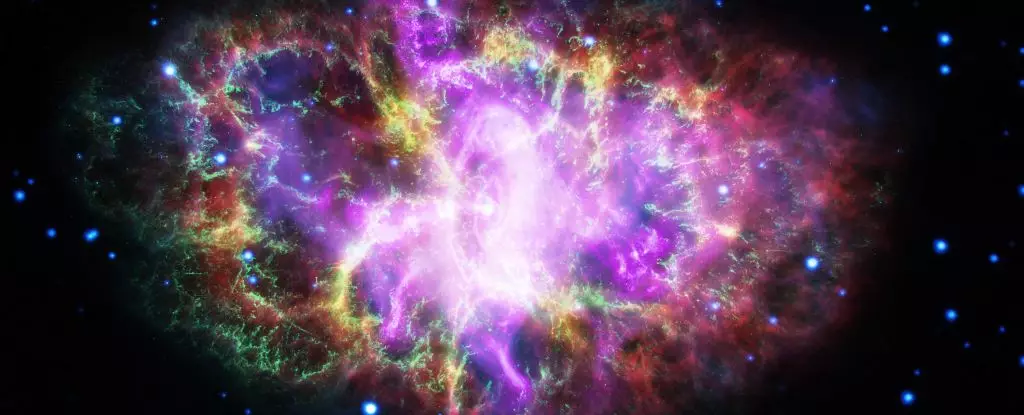In our universe, light serves as a vital link connecting distant celestial bodies to our Earthly existence. On a seemingly mundane evening in my actively vibrant San Diego backyard, I engaged in an extraordinary experience with my telescope set for astrophotography. As I eagerly awaited the first photograph streamed onto my tablet, my wife, Cristina, approached, prompting a moment of wonder that sparked a profound conversation. The image revealed was that of the Pinwheel Galaxy, a swirling mass brimming with about a trillion stars, its light having traversed an unfathomable distance of 25 million light years to reach my device. It was a spectacular dance of light with deep implications about space, time, and the nature of reality.
Cristina’s innocent yet searching question — “Doesn’t light get tired during such a long journey?” — unraveled the complexities of light behavior that often escape our intuition. As an astrophysicist, I was intrigued not just by her curiosity but by the opportunity it provided to dive into the fascinating world of electromagnetic radiation. What is it about light that allows it to journey endlessly across the cosmos, maintaining its vigor and energy?
The Nature of Light
Light stands as a unique phenomenon in the universe. Defined as electromagnetic radiation, it consists of electric and magnetic waves lacking mass, enabling it to reach a staggering velocity of approximately 186,000 miles per second (or about 300,000 kilometers per second). Nothing else in the universe travels faster, a fact that, while well-documented, still elicits awe in the face of its staggering scale. In the blink of an eye, a photon can travel around the globe more than twice, illustrating not only the speed but the vastness of space it must navigate.
Consider the distance light covers merely to reach our eyes from familiar cosmic entities. Light from the Sun, positioned 93 million miles away from the Earth, requires just over eight minutes to arrive, meaning when we feel its warmth, we’re experiencing an echo from eight minutes ago. Our nearest stellar neighbor, Alpha Centauri, is a colossal 26 trillion miles away, presenting a light travel time of over four years. This stark distance highlights the ancient nature of the light we enjoy each night — it’s literally centuries in the making.
The Endless Voyage of Photons
Interestingly, light can lose energy, but the vastness of space often renders such losses negligible. Most light travels through the vacuum of space without encountering obstacles like interstellar dust or gas, allowing it to maintain its energy as it speeds towards us. When unobstructed, light is unyielding; time, it seems, holds no sway over its journey.
An inspiring aspect of this discussion is time itself. The phenomenon of time dilation offers insight into the immense speed at which light operates. Imagine an astronaut aboard the International Space Station; that individual experiences a minuscule slowing of time relative to someone on Earth. This captivating consequence of relativity reinforces the idea that time can be inconsistent — stretching or compressing based on velocity and gravitational influences.
For a photon, which travels at the speed of light, the laws of time and distance blur into insignificance. From its unique perspective, the travel from the stars to my tablet is instantaneous. The reality is altered: what appears as an epic journey across 25 million light years becomes an infinitesimal fraction of time and space for light. This duality encapsulates the profound enigmas underlying relativistic physics, bending our comprehension of existence itself.
The Beauty of Cosmic Conversations
This cosmic dance of light culminates in the rich tapestry of knowledge we accumulate and our shared experiences. The instant that the light landed on my tablet, creating a vibrant image of the Pinwheel Galaxy, it became a catalyst for a rich conversation between Cristina and me. It was as if the universe had conspired to merge our lives with the threads of the cosmos. The gravitational pull of those mesmerizing stars spurred questions and musings that animated our evening.
In sharing space with the wonders of the universe, one can’t help but ponder the interconnectedness of our experiences on Earth with the astronomical forces at play in the universe. Engaging in discussions about light leads us through the princely corridors of our very existence, illuminating experiences that bind us, fostering curiosity, and ultimately enriching our understanding of who we are in the wider universe.
This dialogue around light and space does not merely appeal to the intellect; it appeals to the imagination, forging pathways into the mysteries that await us beyond the stars. The cosmos beckons with its incredible splendor, ensuring that each conversation rooted in curiosity offers an opportunity to connect not only with the universe but also with one another, bridging the immeasurable expanses between us.


Leave a Reply